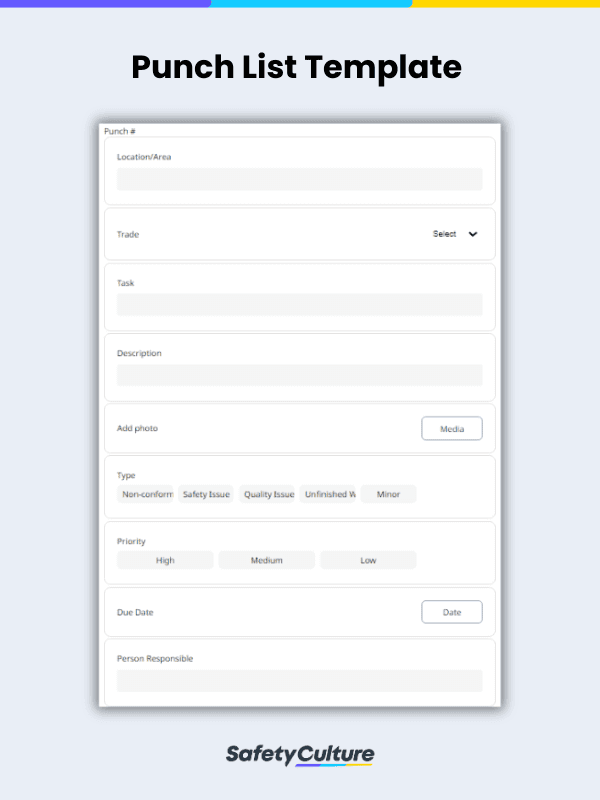What is a Punch List Template?
A punch list template is a tool commonly used in the construction industry to effectively finish the job, ensure proper project closeout, and improve customer satisfaction.
This template includes a list of items to be addressed by general contractors and owners before project completion. It is only prepared when the work is substantially fulfilled and the contractor has arranged a punch list walkthrough with the client and architect. Though most punch list templates are used as guides in writing punch lists, some punch list templates already contain common pre-closeout issues for the contractor to start with and build on.
Why Use a Punch List Template?
Punch list templates are highly adaptable and can be tailored to fit a variety of project categories. For example, a construction company might use one punch list template for renovation projects and another for building projects.
Aside from being customizable, a punch list template also gives contractors, sub-contractors, architects, and workers a chance to collaborate and integrate their knowledge, resulting in a seamless experience for the client.
Starting from a common base also makes it easier for people of different professions or companies to work together in completing the punch list items on time. With both team collaboration and efficiency maximized, reaching project closeout sooner than expected is an attainable goal for all involved.
What is the Process?
The punch list process involves tasks that are typically done by the architect and contractor. Below are the steps in the punch list process presented in their proper order:
For the contractor:
- Review contract documents
- Inspect construction work
- Decide if work is substantially complete
- Prepare a punch list
- Submit punch list to architect
For the architect:
- Conduct a pre-final inspection
- Prepare a certificate of substantial completion that includes the following information:a) Date of substantial completionb) Responsibilities of client and contractorc) Timeframe for contractor to finish punch list items
- Submit certificate to client and contractor
For the contractor:
- Submit written acceptance to architect
- Finish punch list items
- Notify architect and apply for final payment
What should be included in a Punch List Template
The contents of a punch list usually depends on items that were not achieved in a project. To ensure efficient follow-up and closure, a punch list template essentially includes these these items :
- Basic Project Information
- Project manager and owner contact information
- Detailed description of the tasks
- Trade or subcontractor responsible for the work
- Priority level or urgency of the item
- Deadline or due date for completing the item
- Current status (not started, in progress, completed)
How Do You Write a Punch List?
Since punch lists vary depending on the nature of the project and the quality of the construction work completed in the previous phases, the process of writing a punch list is different each time. However, there are basic steps that a contractor must take to form a coherent punch list that the client, architect, and subcontractors approve of.
Here are 3 key steps on how to write a punch list:
- Arrange a Punch List Walkthrough – Arrange a punch list walkthrough with the client and architect to note defects, including locations and photos for the detailed punch list. Clarify priorities with the client before ending.
- Describe Each Task in Detail – Based on the punch list walkthrough, list detailed actions needed to fix identified defects. Include photos, drawings, or floor plans to clearly show problems and required solutions.
- Assign Tasks and Set Deadlines – Assign each punch list task to a subcontractor with a deadline. Discuss the assigned tasks with subcontractors and update the punch list based on their input before submitting to the architect.
A completed punch list template would look like this :
FAQs About Punch Lists
Why is a Punch List Called a Punch List?
Who is Responsible for the Punch List?
How are punch list items tracked and completed?



